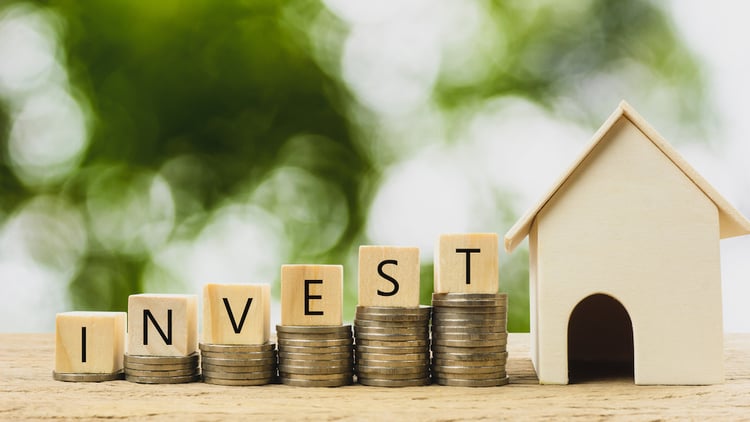Real estate investors come in all shapes and sizes. While investing in real estate is often touted as being active or passive, there’s quite a bit more to real estate investing than just those two choices.
In this article, we’ll begin by looking at the strategies and motives people use to invest in real estate, then wrap up by discussing the main types of real estate investors.
Key takeaways
- People invest in different types of real estate, using different investing strategies and timeframes.
- The two most common types of residential real estate investments are single-family rental homes and small multifamily properties.
- Real estate investing timeframes can be short term or long term, depending on the level of risk an investor is comfortable with.
- Short-term real estate investors include people who wholesale or fix and flip homes in the hope of making a quick profit.
- Buy-and-hold real estate investors purchase property for the long term, with the goal of making money through rental income, property appreciation, and tax benefits.

How people invest in real estate
The reasons why people invest in real estate can be classified by property type, investing strategy, and timeframe for investing.
Property type
There are two main types of property in residential real estate: Single family homes and multifamily buildings.
Buying a single family rental property is arguably the most straightforward type of investment for several reasons. Homes may be easy to find and there are numerous sources for financing a single family rental.
One reason why some investors buy multifamily properties is because each unit generates its own rental income stream. In other words, instead of owning a single family home and receiving one rent check each month, a multifamily investor receives rental income from each unit that is rented out.
Of course, having multiple rental units may also mean more repair work for a landlord. For example, there are multiple toilets to fix, heating and air conditioning units to maintain, and tenants to deal with.
Investing strategy
Real estate investors generally use either an active or passive investing strategy.
An example of an active real estate investor is someone who manages his or her rental property. In exchange for a higher degree of hands-on control, an active investor doesn’t mind dealing with tenants and maintenance issues, and complying with landlord-tenant and fair housing laws.
On the other hand, passive investors delegate day-to-day responsibilities to a property manager while focusing on the big picture. However, the word “passive” may be a little bit misleading.
That’s because passive buy-and-hold investors still make major decisions, such as when to spend money on a capital expense like updating and remodeling, and reviewing financial statements from the property management company each month.
Timeframe for investing
Some investors who are comfortable taking on more risk in exchange for more potential reward invest in real estate for the short term. The goal is to move in and out of a deal quickly, by buying low and selling high--at least if everything goes right.
Long-term real estate investors aim to make money in real estate by buying and holding. Rather than hoping for a fast short-term gain, the goal of a buy-and-hold investor is to balance risk and reward by collecting rental income and profiting from the potential appreciation in property value.

4 common types of real estate investors
There are an almost countless number of ways people try to make money in the real estate business. To help narrow the options down, here are the most common types of real estate investors and how they work.
Speculator
Speculators try to time the real estate market, hoping to make healthy profits in a short period of time. Two common types of real estate speculation are fixing-and-flipping and wholesaling real estate.
Fix-and-flip
Also known as rehabbers, fix-and-flip real estate investors apply the classic investing strategy of buying low and selling high.
Flippers locate a property in need of repair that is significantly below market value. Repairs are made to fix the property up and add value, such as enlarging the existing square footage by adding an extra bedroom or updating the kitchen and bathrooms.
When a fix-and-flip goes as planned, the property is sold at a much higher price than the flipper paid, and profit is made on the difference between the initial investment plus the cost of repairs and the resale selling price.
While there may be the potential for fast profits, fixing-and-flipping is also an active real estate investing strategy that is best for people willing to accept a high level of risk in exchange for the possibility of high rewards.
Wholesale
Wholesale real estate is a variation of fixing-and-flipping, except that the wholesaler never takes possession of the property and doesn’t do any of the needed repairs or updating.
A wholesaler scours the market for a distressed property, such as a neglected home with an out-of-state owner or a property inherited by someone who has absolutely no interest in owning real estate.
After locating a motivated seller, a wholesaler estimates as accurately as possible any repair and updating costs, negotiates a below-market purchase price, and signs a purchase and sale agreement with the owner using a small earnest money deposit.
As quickly as possible, a wholesaler searches for another investor to assign the purchase agreement to. When the transaction closes, the wholesaler receives a wholesale fee, and the investor the purchase and sale agreement was assigned to make the repairs and ends up with a property that is still below market value. Several states require wholesalers to be licensed as real estate agents.
Speculating risks
Sometimes real estate speculating works very well, other times speculating doesn’t go according to plan.
For example, during the 6-year period leading up to the Global Financial Crisis of 2007 – 2009, the Federal Reserve reports that the median sales price of houses increased by about 50%. Before the Global Financial Crisis struck, some speculators made a lot of money in real estate.
Unfortunately, when the real estate market crashed a lot of people also lost money, not to mention their homes. Between Q1 2007 and Q1 2009 home prices declined by nearly 20% and millions of people lost their homes to foreclosure, including some speculators hoping for one last successful flip.
Buy and hold
Buy-and-hold real estate investors are on the opposite end of the spectrum from speculators. Also known as long-term investors, investors who buy-and-hold a portfolio hope to make money with real estate by:
- Collecting rental income.
- Profiting from potential appreciation in property value over the long term.
- Reducing taxable net income with the wide variety of tax deductions available to real estate investors.
Buy-and-hold real estate investors hold property for the long term because they understand that the real estate market can go down as well as up. This applies to all different types of real estate investments: commercial properties, residential properties, industrial, retail, etc.
Since 1970, there have been 7 recessions where real estate values have decreased before eventually recovering to new highs, according to the Federal Reserve. Instead of trying to time the market, this type of investor prefers to watch value grow over a period of years.
For example, since the end of the Global Financial Crisis, the median sales price of houses sold in the U.S. has increased by nearly 80% (Q1 2009 through Q2 2021).
Owner occupant
Owner-occupants are people that own a home as a primary residence. Some people like owning the home they live in, and view the decision more as a lifestyle option than a financial decision.
However, people are sometimes surprised to learn that owner-occupants can also be real estate investors.
People who “house hack” their home try to make extra money from their primary residence by renting out a room, or converting a basement into a studio apartment. Real estate investors can also house hack by purchasing a small multifamily property using a more affordable primary residence loan, then living in one unit and renting the other units out.
House hacking an owner-occupied property can be a good way to learn about being a landlord by easing into the real estate investing business.
REIT investor
A REIT (real estate investment trust) is a private or publicly-traded company that invests in different types of real estate including commercial, residential, industrial, and special-use properties like student housing and cold storage facilities. Shares of public REITs are traded on the major stock exchanges and can easily be bought and sold just like any other stock or bond.
Investing in a REIT offers a way to make money from real estate without owning property directly. REITs are required to pay out 90% of their income each year as dividends to their shareholders.
According to Nareit, the top 21 residential REITs have paid out an average dividend yield of 2.51% so far this year, and generated a total return of 36.29% year-to-date. However, REITs do not offer the same potential advantages that directly investing in real estate does.
For example, investors have to trust the REIT to invest in the best properties and manage them properly. REIT investors also do not receive the same tax benefits of directly owning rental property, such as deducting owner expenses like continuing education and business travel, or using depreciation to reduce taxable net income.
Wrapping up
They say that in the real estate business, there’s something for every type of real estate investor. People who are comfortable with a higher level of risk may try to make a quick profit by wholesaling or fixing-and-flipping a home. On the other hand, investors looking for a more balanced blend of risk with potential reward may decide that buying and holding real estate for the long-term is a better way to go.









